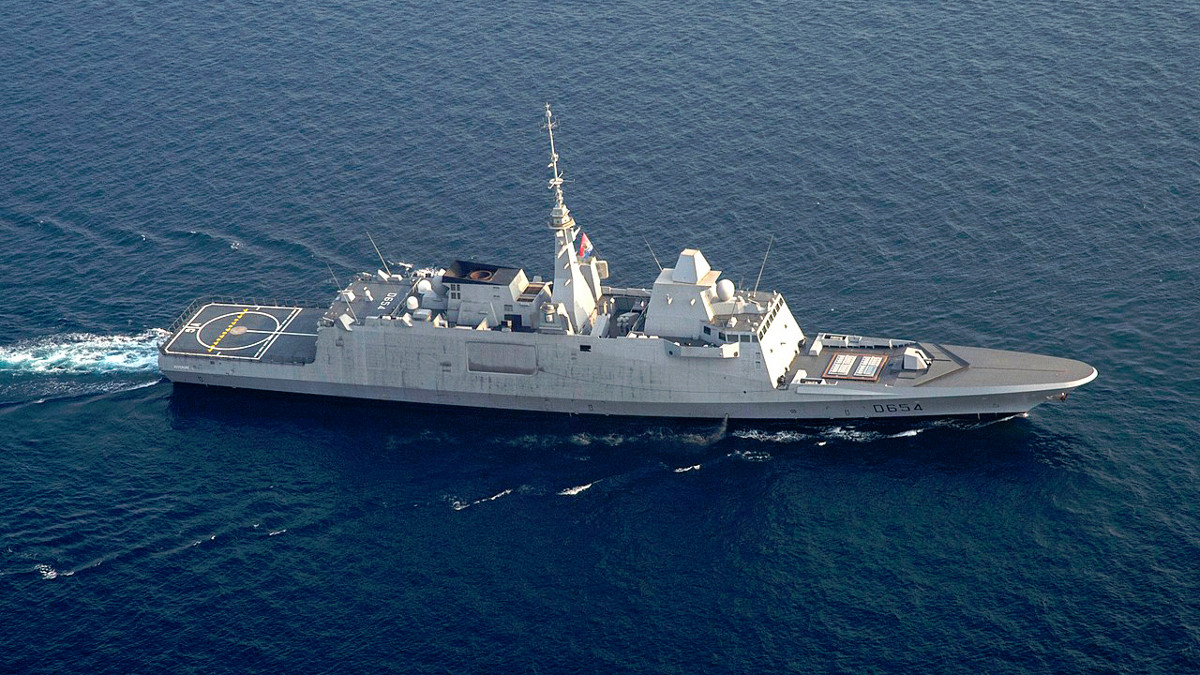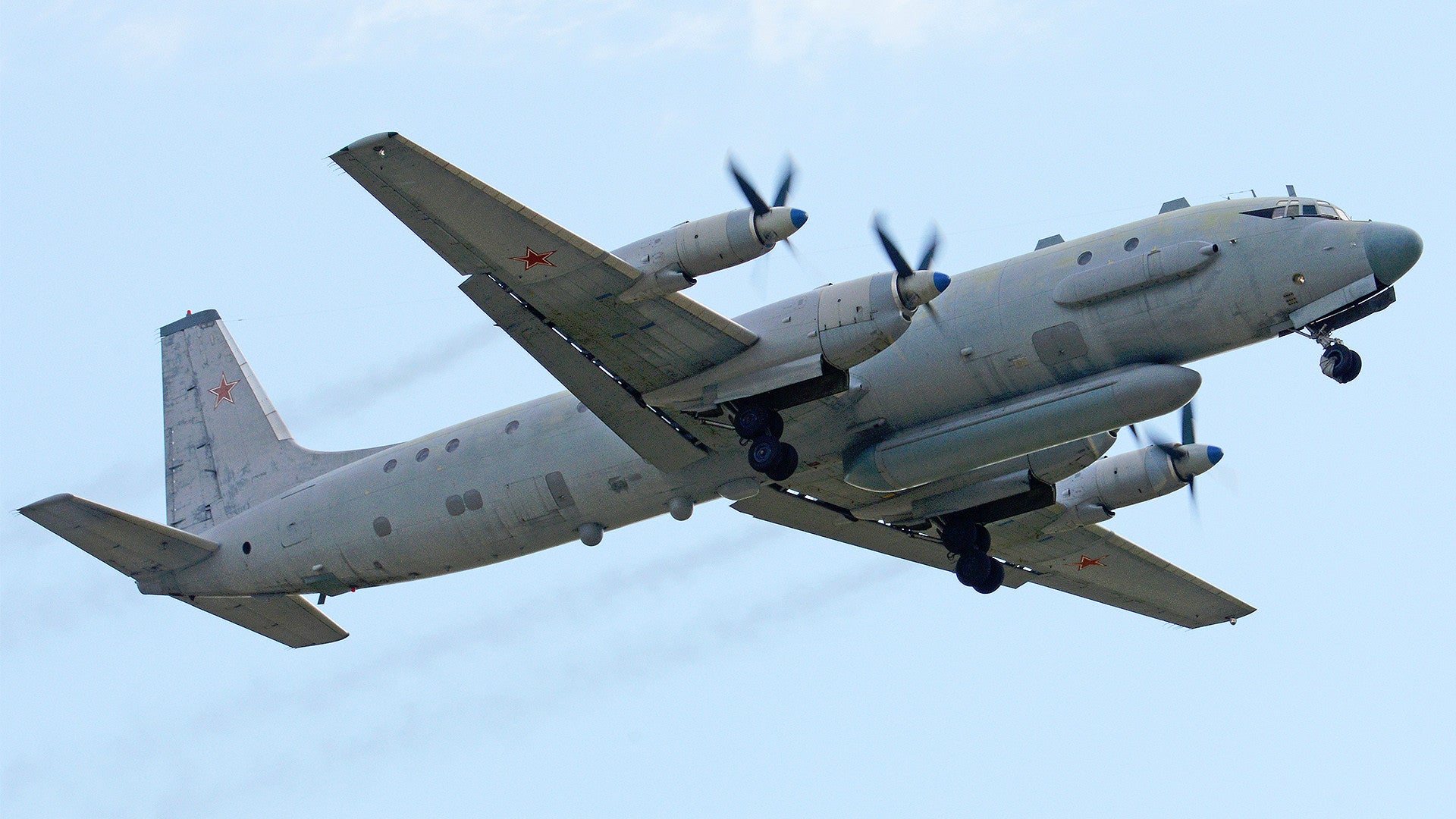Syrian air defense forces may have accidentally shot down a Russian Il-20 Coot electronic intelligence aircraft during an attempt to respond to apparent Israeli air strikes against targets in Syria’s coastal Latakia governorate. Meanwhile, Russia’s Ministry of Defense claims that a French frigate may have been responsible and the French have yet to confirm or deny that they had anything to do with the loss of the aircraft.
On Sept. 17, 2018, CNN, citing an unnamed U.S. government official, reported that the U.S. military believed Syrian surface-to-air missiles had brought down the Il-20. The Russian Defense Ministry did confirm the aircraft had gone missing in the early hours of Sept. 18, 2018, local time in Syria, but did not say who or what might have been responsible for the crash.
“The connection with the crew of the Russian Il-20 aircraft was lost over the Mediterranean Sea when the plane was returning to the airbase of Khmeimim, 35 kilometers from the coast of Syria,” a Russian Ministry of Defense official said, according to state-run media outlet TASS. The “Il-20 … disappeared during the attack of four Israeli F-16 aircraft on Syrian targets in the province of Latakia.”

The Israel Defense Forces have not commented on the strikes, which appeared to involve F-16 fighters firing stand-off weapons, possibly from Lebanese airspace, into Latakia at a Syrian Organization for Technological Industries facility. This organization is linked to Syria’s chemical weapons and advanced missile programs. Syrian state media claimed the country’s military had shot down a number of incoming missiles.
This the third reported Israeli strike in Syria since the beginning of September 2018. Israel reportedly conducted another raid on targets at Damascus International Airport on Sept. 15, 2018, and had hit targets near the port city of Tartus, where Russia has its only naval port on the Mediterranean, on Sept. 4, 2018.
The United States reportedly learned that the Il-20 had crashed when Syrian forces broadcast an emergency message on an international frequency, according to CNN. American officials then got confirmation of the incident and additional details from a third country, which the source declined to identify.

The U.S. military has denied any involvement in the strikes in Latakia. However, Russia’s Defense Ministry said that “Russian radars fixed missile launches from the French frigate Auvergne, which was in that area,” according to TASS.
Auvergne is an Aquitaine-class, or FREMM multipurpose frigate, that carries both Missile de Croisière Naval (MdCN) land-attack cruise missiles and Aster 15 surface-to-air missiles. In April 2018, her sister ship Languedoc took part in a massive U.S.-led missile barrage against Syrian chemical weapons-related sites. In August 2018, The United States, the United Kingdom, and France reiterated their willingness to take action again in response to another one of Syria’s chemical weapon attacks.

The increasingly convoluted war in Syria is highly susceptible to a major miscalculation that could spark an international crisis. The shooting down of a large surveillance aircraft with over a dozen lives onboard could be that spark. Hopefully, that’s not the case, but there is always the risk that the event could be used as an information warfare fulcrum even if it was a simple case of friendly fire. Alternatively, Moscow could downplay the incident out of embarrassment if it becomes clear to external parties that Syrian air defenses did indeed down the aircraft by accident.
We are monitoring for any major movements of air traffic in the Mediterranean and will update this story as more information becomes available.
UPDATE: 12:20pm PDT—
The French government finally commented on Russia’s insinuations. Multiple outlets report that officials categorically denied any involvement in the incident. It will be interesting to see if we get additional denials as the day goes on.
Meanwhile, activity in the area has been sparse, at least as far as plane a ship trackers are concerned. A Russia tug departed Tartus toward the waters off Latakia but that makes sense as there is some sort of search and rescue operation underway.
Air traffic has been very light in the area after the incident as well. Even the usual snoopers haven’t shown up. A RAF Tornado did pop up flying a fairly normal route into Eastern Syria, but they held up for a while over the Eastern Mediterranean, directly off Latakia. It isn’t clear what this was all about, but it could be something unrelated to the incident. After last evening’s tragic event, squawking while transiting the area is probably a smart move on the Tornado crew’s part.
Update: 2:25am PDT—
Russia now says that a Syrian SA-5 (S-200) surface-to-air missile did indeed accidentally take down its Il-20 Coot electronic intelligence gathering plane, but that the Israeli Air Force is also to blame for the friendly fire incident that claimed 14 lives. According to Russian officials, only a one minute warning was given by Israel of the impending attack, leaving Russian forces nowhere near enough time to make sure their personnel and materiel would be safe from the onslaught.
According to Moscow, four F-16s approached Latakia at low altitude from the Mediterranean. A statement from the Russian Ministry of Defense obtained by RT.com reads:
“The Israeli pilots used the Russian plane as cover and set it up to be targeted by the Syrian air defense forces. As a consequence, the Il-20, which has radar cross-section much larger than the F-16, was shot down by an S-200 system missile.”
The wreckage of the aircraft has been found by Russian search parties roughly 17 miles west of Latakia.
Here is a diagram of the incident, at least according to the Russian government, that has been provided to the press:

The idea that Israel used the Il-20 for cover is questionable at best. Just look at the chart above, the timing of such an operation without coordination with the Il-20’s crew would have to of been uncanny. What likely happened is that Israel executed its standoff strike from a launch position over the Mediterranean and the Il-20 happened to stumble into the area.
If the IAF used man-in-the-loop air-to-ground missiles, as it often does, those F-16s would have had to loiter for a period of time to maintain data-link connectivity with the missiles as they careened towards their targets. Also, it’s important to note that strike missions into Syria are usually seen as critical operations by Israel and risk is accepted in exchange for destroying often high value and time-sensitive targets.
In addition, the F-16s didn’t infiltrate deep into enemy territory in any way before sending their missiles toward their final destinations and the Il-20 wasn’t even over the water for long. It had been flying a route primarily over land. The surveillance aircraft probably ended up being a decoy by happenstance and that’s if the F-16s were even in the vicinity by the time Syrian missile batteries responded to the strikes.
We’ll have to wait and see how all this unfolds, but just like how it was possibly the French frigate’s fault before this information was released, Russia seems to be willing to do whatever it can to redirect blame. In this case, Israel struck right at Russia’s doorstep in Syria, which is a highly peculiar escalation that is sure to enrage Russian commanders and the powers that be in the Kremlin.
Update: 7:25am PDT—
Israel has now responded, expressing “sorrow” for the loss of the Russian service members, but place the blame for shooting the plane down on the Syrian regime of Bashar Al Assad. In addition, the Israelis blamed Iran and the Lebanese militant group Hezbollah, ostensibly for provoking the incident in the first place by being in Syria at all.
“Overnight, IAF [Israeli Air Force] fighter jets targeted a facility of the Syrian Armed Forces from which systems to manufacture accurate and lethal weapons were about to be transferred on behalf of Iran to Hezbollah in Lebanon,” the Israeli Air Force Tweeted out on Sept. 18, 2018. “These weapons were meant to attack Israel, and posed an intolerable threat against it.”
Israel also confirmed that it does have a deconfliction mechanism in place with Russia and that it employed it before the strikes, though they did not release any other details to support or contradict the Russian assertion that they had only gotten one minute in which to react. They did, however, release four important pieces of information about the incident in a series of Tweets, which we have reproduced below:
1. Extensive and inaccurate Syrian anti-aircraft (Surface to Air missile) fire caused the Russian plane to be hit and downed.
2. When the Syrian Army launched the missiles that hit the Russian plane, IAF jets were already within Israeli airspace
3. During the strike against the target in Latakia, the Russian plane that was then hit was not within the area of the operation
4. The Syrian anti-air batteries fired indiscriminately and from what we understand, did not bother to ensure that no Russian planes were in the air
The Israeli Air Force says it is willing to share any other relevant details with the Russians to support their own inquiry into what exactly occurred.
Update: 9:25am PDT—
U.S. Secretary of State Mike Pompeo has released a statement that also “expresses sorrow” over the incident, but makes no mention of Israeli involvement at all. He also warned about the “danger of tragic miscalculation in Syria’s crowded theater of operations” and called for both a peaceful resolution to Syria’s civil war and an end to Iran’s “provocative” activities in the country.
Contact the author: Tyler@thedrive.com
